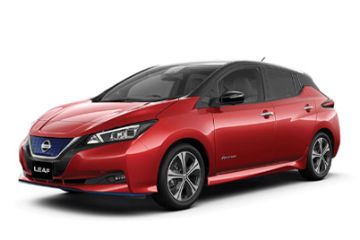![What are the Innovative Features of the 2022 Nissan Leaf? 01]()
One significant factor affecting our way of living is fuel prices. The production and prices of some commodities rely on it. With the continuously rising fuel prices nowadays, people are seeking transportation alternatives to ease the burden. That is why automobile manufacturers are working double-time to develop innovative ways to replace fossil fuels. Hence why Electric Vehicles (EVs) have been becoming popular. We have seen some hybrid vehicles in the past few years where automakers combine the power of fuel and electricity to run cars, like the Toyota Prius and the Corolla Cross Hybrid.
![What are the Innovative Features of the 2022 Nissan Leaf? 02]()
Although electric-powered vehicles were first invented back in the 1800s, the first commercially available EV was introduced in December 2010 by the Japanese automaker Nissan, and they call it – the Nissan Leaf. It gained rapid popularity because of its innovative and reliable take on electric-powered vehicles. It has also received numerous accolades, which paid off its years of hard work. And as they enter the Philippine shores with the 2022 version of the Nissan Leaf, the company promises connection, confidence, and an exciting ride.
![What are the Innovative Features of the 2022 Nissan Leaf? 01]()
What makes the 2022 Nissan Leaf stand out in the competitive market?
Forget the crazy oil price hike
Unlike hybrid vehicles, the Nissan Leaf is 100 percent electric-powered, so you don't have to pray for fuel prices to decline each night. All you have to do is charge it, just like how you charge your mobile devices. It needs to be plugged into a standard 220-volt power source with a dedicated socket for 15-18 hours to have a fully-charged battery. Or, if you needed to charge faster, you could install a wall-box charger at home or in your office. Using a wall-box charger would take the Leaf 7.5 hours to have a fully charged battery. Plus, there are charging stations in select malls and public spaces in the country. The good news is that Nissan currently has seven charging stations in the Philippines through dealerships.
![What are the Innovative Features of the 2022 Nissan Leaf? 02]()
Zero emissions
A single internal combustion engine produces about 5.2 metric tons of carbon dioxide yearly. With that, imagine how large the number of harmful chemicals we release into the environment is with the billions of cars around the globe. And it only adds up annually. The great thing about the Nissan Leaf is that you will never have to contribute harmful gasses to the environment. This electric vehicle is highly sustainable and eco-friendly, with no fuel burning involved in its daily operation.
![What are the Innovative Features of the 2022 Nissan Leaf? 03]()
E-pedal
Because of the E-pedal, Nissan Leaf accelerates and decelerates with just one foot, like how you drive golf carts. As soon as you lift your foot, the car decelerates, and vice versa. It makes braking easy, activating the regenerative energy back to the system. The e-pedal is not just an aid but also an agent to regenerate power.
![What are the Innovative Features of the 2022 Nissan Leaf? 04]()
311-kilometer range
Several people are hesitant when it comes to converting from traditional fuel-powered vehicles to electric vehicles because of the connotation that the range from a fully-charged EV is limited and that it would just trouble you in the middle of EDSA if the car's batteries run out of juice.
According to the New European Driving Cycle (NEDC), the Nissan Leaf's 40kWh high-voltage lithium-ion battery could take up to 311 kilometers on a single full charge. One full charge could last you a week without recharging, depending on how far your daily commute is. If you take it to work, you could rely on it five times a week from Quezon City to Taguig, back and forth, or a one-way trip to Baguio. The driving mode is also a factor, like in traditional combustion engines. The Eco mode limits the motor output and saves energy and the B-mode recovers energy from braking and deceleration. This charges the battery and helps extend range.
Will the Nissan Leaf be on your purchasing shortlist in the future?
![What are the Innovative Features of the 2022 Nissan Leaf? 05]()
Also Read: The 2022 Nissan Leaf: A Decent EV for its Price












